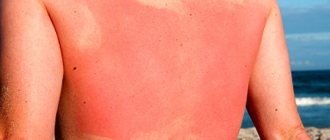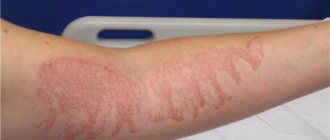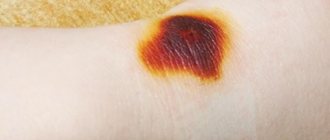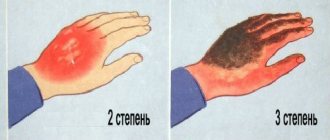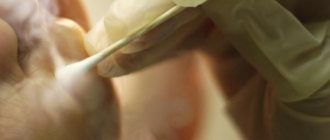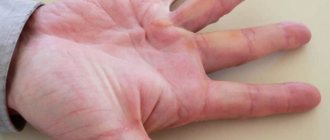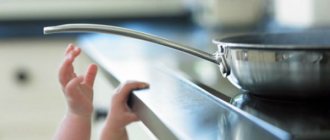A burn is damage to soft tissue that occurs as a result of exposure to high temperatures and chemicals. Burn wounds come in varying degrees of severity, which are characterized by the depth and area of soft tissue damage. The duration of the recovery process, methods and methods of treatment depend on the severity of the wounds received and the reasons that caused them. In total, in medicine there are four stages of burns, each of them is characterized by the depth of tissue damage and its extent. The easiest is the first, which, with minimal attention from a person, passes within two to three days, leaving absolutely no traces. Severe forms of burns include the third and fourth; for such injuries, treatment is carried out exclusively in a hospital setting and requires a long recovery period.
This article is devoted to second-degree burns, as the most common, which can be obtained both at home and at work.
Determine the severity of the damage
A burn in all situations is characterized by a sharp painful sensation in an acute form. It is important to determine the severity of the harm caused by the injury before taking any action. This is necessary for timely and effective assistance.
Without such knowledge, you simply will not know what to do if you are burned by boiling water, since different degrees of severity require their own, unique approach. Sometimes your own strength will be enough, and sometimes an emergency call to specialists is required.
There are four main burn levels:
- The first is that the injury occurred exclusively in the upper layer of the epidermis. The injured area is characterized by slight redness and slight swelling. In almost all situations, it does not require additional intervention, eliminating itself after a couple of days.
- The second is deeper lesions of the skin, their result is the formation of blisters, redness, and swelling. With proper assistance, infections do not enter the resulting wounds and the damage is eliminated on its own after 12 days.
- The third one affects not only the skin, but also soft tissues; the opening of blisters is accompanied by the active formation of scars, forming purulent inflammation; scars appear during healing of damage.
- The fourth is severe and deep tissue damage that can occur with prolonged exposure to boiling water. This degree of burn is often accompanied by painful shock and skin necrosis (dead zones of the skin).
Household injuries are usually grade 1 or 2, but if there are signs of other burns, you should see a doctor immediately. In case of a burn with boiling water, first aid is usually provided in cases of domestic damage, which are described in the first two points.
In addition, if the skin is burned on more than 15% of the body surface, mandatory medical attention is required. How to determine your own burn zone? The process of further treatment of a burn with boiling water depends on this.
According to the rules accepted by experts for burns with boiling water, the entire surface of the body is conventionally divided into several points (percents):
- 9% for each hand;
- head - 9%;
- anterior and posterior sections of the body - 18%;
- for each leg - 18%.
According to the palm rule, 1% applies, but such burns are among the most dangerous and painful. According to the “law of the palm”, the area of such damage is 1% of the total area of the skin. When determining the size of the burn, do not place your hands on the damaged skin!
What to do in case of a hand burn and other types of injuries can also be determined by the location of the damaged areas. Most often, household-type injuries occur on the arms or legs, but in case of head injuries, you will need to exclude self-treatment and contact a specialist (immediately).
Also, the severity depends on its location:
- with the most frequent calls to specialists, injuries (arms and legs) were received at home, when a person accidentally spilled boiling water (this type of injury is not dangerous when a small area is affected);
- burns to the torso are more painful and severe, especially if the damage is severe enough: internal organs may be injured;
- The most dangerous burns are boiling water that gets on the head and face. This lesion affects the eyes, mouth, respiratory tract and hearing organs.
If the last point is damaged, consult a doctor immediately! This is required by first aid for severe burns. In addition, we recommend that you call an ambulance if a child is injured in any way (even from the first point). Children's skin is thinner than that of adults, but it does not have a sufficient protective layer.
Therefore, even a small burn at first glance can be serious. Help with burns from boiling water in childhood should be provided by a specialist, since this is associated with many risks. You may not only not help, but also harm with your actions.
Types of burns and causes of their occurrence
The main criterion for determining the type of burns is the type of source, the unnatural effect of which on the skin provokes their damage.
As a rule, the skin suffers from contact with high temperatures from fire, heated objects, liquids, steam, as well as from aggressive effects on tissues from chemicals or radiation.
Therefore, the following types are distinguished:
- thermal;
- chemical;
- radiation (solar), although the second degree of damage of this type is extremely rare and only in people with very fair skin (radiation);
- Electrical is the effect of current or lightning. These physical phenomena, upon contact with the body, form the point of entry and exit of the discharge. It is in these places that the burn forms.
In children under three years of age, the most common causes of burns are scalding with boiling water, steam, and touching hot objects. As a rule, the arms (hands and palms) are affected. And this is a particularly painful injury, since there are a lot of nerve receptors collected on the palms and fingertips.
Legs and feet also often suffer from thermal burns. These parts of the body take the “blow” of spilled boiling water, fire, hot appliances, etc.
Of particular note is the second degree burn in the facial area. Its causes may include exposure to steam, boiling water, chemicals, electric welding, and even a cosmetic procedure for cleansing the face using phenol-containing preparations. You can also damage your facial skin with iodine, hydrogen peroxide, potassium permanganate and other aggressive substances if you do not follow the required concentration and safety precautions.
The most complex second degree burns are injuries to the eyes and esophagus. Damage to the eyes occurs as a result of careless handling of chemicals, flammable liquids, and explosive structures. A burn of the esophagus usually involves damage to the mucous membranes and muscle tissue. These injuries occur when chemicals enter it.
Complications - burn disease
Burn disease - if hot water is exposed for a long time, and a large area of damaged skin can cause a dangerous complication. Thus, the body reacts to the traumatic effects of high temperatures. Such consequences can include a burn of the hand with boiling water and other areas of the skin.
As a rule, these consequences are caused by improper first aid, which leads to other consequences (for example, the formation of scars even after treatment from specialists). Only a specialist knows what to do in case of a severe burn from boiling water.
Before determining how to treat a burn with boiling water, it is necessary to take into account the location of the skin lesion and the stage of the lesion. Burn disease has 4 stages:
- State of shock: lasts 3 days. This type changes the water-electrolyte balance of the body and makes changes in the level of acid-base balance, which significantly impairs kidney function.
- Acute burn toxemia: the result of disruption of normal blood flow and kidney function, lasting up to 2 weeks. The absorption of the toxin into the affected area begins. If the kidneys cannot return to normal function (in the case of severe burns), acute kidney failure may occur.
- Septicotoxemia: this development of events is possible with injuries of severity level 3, it is associated with a cycle of starting wound cleansing. There are malfunctions in various organs, purulent poisoning: intestinal ulcers, pneumonia. The reason here is not microorganisms, but blockage of small blood vessels due to general circulatory disorders.
- Rehabilitation: the final stage of burn disease continues until complete recovery.
Currently, minor burns are treated by general surgeons, but severe burns are treated in specialized burn centers.
A burn to the leg with boiling water and damage to other areas is often characterized by the stages described. They do not depend on localization, proceeding in most cases the same way.
Severity and healing time
According to the accepted international classification, there are 4 degrees of burns depending on the depth of tissue damage:
- I – superficial with partial damage to the outer layer, manifested by redness and swelling of the skin, healing in several days;
- II – superficial with complete damage to the epidermis and its detachment, manifested by redness and blisters with clear liquid, healing from 1.5 to 3 weeks. The photo shows burns of 2nd degree of severity;
- III - divided into 2 degrees: IIIA, considered a borderline burn (medium depth), the entire thickness of the skin is damaged, but only partially, it looks like separate dark areas of necrosis against the background of redness, opened blisters with bloody contents, heals for at least a month; IIIB, is considered a deep burn, when the entire thickness of the skin is damaged down to the subcutaneous tissue, has the appearance of a dry or wet necrotic scab, heals with the formation of rough scars within several months, sometimes up to a year;
- IV – severe burn with complete damage to the skin, tissue and underlying tissues (muscles, bones, joints, ligaments), a continuous scab is formed with complete loss of sensitivity, such burns can be treated and heal for years, require multiple operations, skin grafting, leave defects in the tissues , trophic disorders in the form of ulcers on the extremities with charring end in amputation.
The healing time of a burn wound is affected by the cause of the injury. Chemical burns and those caused by ionizing radiation take longer to heal; they inhibit the regenerative properties of tissues. The location of the burns and the age of the victim matter.
Burn wounds take longer to heal on the face, hands, and groin area ; healing occurs more quickly in children and young adults. During the healing period of a burn wound, 3 stages are distinguished based on clinical manifestations and changes occurring in tissues.
The stages of burn healing are as follows:
- I – inflammation, rejection of dead tissue, for burns of the 2nd degree of severity, the healing stage of the burn lasts 3-5 days, for the 3rd degree - about 2 weeks, for the 4th - from 1 to several months, until the dead tissue is completely rejected;
- II - granulation of the wound (filling the defect), with 2nd degree burns there are no burns at this stage, because the deep layers of the skin are not damaged, with 3rd degree the wound can last up to 1-2 months, depending on its size, burns 4- 1st degree is granulated for at least several months; plastic surgery is often required after a burn injury;
- III - epithelization (covering by the epidermis), scarring, for 2nd degree burns, if the protective bladder has not opened, epithelization under it proceeds quickly, and is completed by the middle of the 2nd week; for 3rd degree burns, the process of closing the wound with the epidermis depends depending on its size and location, it can last from 1 to 3 months; if the wound area is large, a skin graft is performed. Severe burns are characterized by delayed epithelialization - at least several months, often requiring the defect to be covered with a skin graft.
First aid
There is a strong recommendation to provide emergency assistance on your own. The most important thing here is not to scare anyone; this is the main recommendation on how to treat a burn from boiling water. Remember that the speed and adequacy of the care you provide will determine the severity of the pathological process and its consequences. A number of clear steps will help minimize the damage caused by boiling water.
After reading the material, you will know what to do if you burn your hand with boiling water or other areas of the skin. First of all, you should not use general recommendations that are misconceptions. They will only lead to a worsening of the condition, which in the future can lead to the development of various complications.
For example, bursting burns from boiling water can serve as a factor that causes various infectious diseases. In some situations you have to open bubbles on your own; in the future we will give recommendations regarding this topic.
Before we discuss what to do in case of a severe burn from boiling water, let’s define actions that should not be taken under any circumstances:
- Do not apply anti-burn agents immediately, you must cool the skin first;
- Sometimes advice on how to help with a burn from boiling water includes various tips for promptly lubricating the affected area of the skin; this action can lead to various serious consequences. Do not lubricate the skin: the irritant is iodine, brilliant green, alcohol, urine, toothpaste and various popular recommendations. Such components cause damage to the skin by blocking it and causing pores to shrink (sea buckthorn oil can be effective, but not immediately after damage);
- opening of the bladder - you can easily infect the body with infectious diseases;
- Information regarding clothing: if it does not stick to the skin, it should be removed as soon as possible; if it persists, it should not be removed; cuts should be made around the damage;
- For such injuries, the wound should be cleaned with clean water instead of citric acid or baking soda. Such components cause scarring and longer healing. The information applies including fire damage.
In the question of how to relieve pain from a burn with boiling water, you sometimes find advice on using sour cream and other similar products. Even mild burns cannot be treated with sour cream, yogurt, etc. - an infection can develop.
The acids in dairy products have a greater impact on inflamed skin, especially since these products today contain various nutritional additives.
What do you need to do to prevent a bubble from bursting in case of a burn with boiling water or other complications that will slow down the process of skin restoration:
Stop the heat (hot water burns can occur due to accidents due to damage to utility systems). If boiling water splashes onto your clothing, remove your clothing. This must be done for any burn with boiling water.
Cool the skin immediately, this is one of the most effective remedies for relieving the pain of a boiling water burn: heat damage continues even after the hot water stops. Extremely hot tissue can damage the surrounding skin, so cooling is necessary in this case.
For this purpose, it is advisable to use a stream of cold water and ice bubbles. The duration of this event is 10-15 minutes.
The first category of damage can be effectively treated with special agents - panthenol (analogue of Bepanten, dexpanthenol, Pantoderm et al.). It should be sprayed over the entire surface and completely absorbed into the skin. If you use panthenol within 2-3 minutes after a burn, the skin will heal faster.
Treatment of wounds from burns with boiling water using these agents is not recommended for severe forms of injury, since their use will not bring the desired result. Under such circumstances, the only correct decision would be to urgently seek the help of specialists. Use these medications only for first-degree boiling water burns.
How to treat burn blisters
With a second degree burn, blistering is inevitable. They should be handled very carefully, trying to perform all manipulations so as not to damage their integrity.
If the blisters are small, then with proper treatment of the burn with special means (see above), they will go away on their own.
But it happens that blisters merge into a single whole and form large bubbles (one or several), inside of which a cloudy liquid is collected. They need to be opened, but only a doctor can do this under special sterile conditions.
In the case when the blisters break on their own, the exposed surface should be treated with an antiseptic solution, and the shell should be cut off with scissors, which are pre-sterilized.
If for some reason an inflammatory process occurs in the burn wound and suppuration begins, then you should consult a doctor immediately. Because under such circumstances, additional therapy with antibiotics may be necessary.
During the inflammatory process, the victim’s temperature rises, chills and weakness occur. The danger of this condition is that if untimely action is taken, the purulent process is quite dangerous and can even lead to death.
Second degree (bubbles)
Grade 2 is characterized by the formation of blisters. They can cause burns from boiling water. If a blister bursts from a burn with boiling water, this can serve as an alarming signal, since the risks of contracting various infections significantly increase. They can cause diseases of both the skin and organs. The consequences can be very severe and affect the immune system.
First aid is to get rid of the blisters or treat them properly. Such a wound from a burn with boiling water requires a careful approach and understanding in what situations it can be eliminated without harm to the person’s condition. In principle, if it is small and does not interfere with the natural way of life, it can be left as is, take painkillers and disinfect the surrounding area with alcohol or iodine.
When it comes to the question of how to relieve a burn from boiling water, in this case, the best solution is the natural recovery process carried out by the body. You can only help him with this without opening the bubbles yourself.
If the bubbles are voluminous and interfere with natural lifestyle and movements, you should open it. This most often occurs when a 2nd degree burn with boiling water occurs; treatment requires opening the blisters. This process of discovery is a very delicate matter.
This is best done in a professional medical facility. Without this option, you must open the blisters yourself. To do this you need:
- Disinfect your hands and the blister area with alcohol or iodine.
- Take sterile medical needles.
- Place them in the affected area with the aim of making a small hole.
- This allows the liquid to drain without damaging the shell.
- Use (not tight) bandages (they should be completely sterile).
- After 4-6 days, the formed film becomes dead skin and forms a layer of epidermis underneath it. This way you can easily eliminate the blistering effect.
Contrary to public opinion, fatty oil does not eliminate hot water burns, and it does not in any way help with the question of how to relieve pain from a boiling water burn. First aid should not be used to lubricate burns with sour cream, fish oil and lard - this can aggravate the condition of the wound through infection.
It is best to assume that natural healing of the skin after burns is the best option - these treatment steps can only reduce signs of pain and symptoms. In this case, a specialist decides how to stop the burn, and for minor injuries it is best not to take any special medications.
general characteristics
Second-degree burns are considered superficial injuries because they do not disrupt the integrity of the germ layer of the skin. They are characterized by visible swelling and redness of the skin, as well as the formation of blisters filled with clear contents.
Bubbles filled with transudate
At the same time, with such a skin defect, rough scars do not appear, and tissue healing (regeneration) occurs spontaneously. At the same time, correct treatment promotes rapid recovery, but incorrect treatment can lead to the development of serious complications.
What can't be done
Regardless of the degree of burn from boiling water, these recommendations should not be followed. We touch on the main points that are common among the population. According to current medical practice, they become the causes of various complications.
Do not use oil, ointment or any other method to fill the burnt area with grease. This is especially true for situations where a blister bursts due to a burn with boiling water. This meaningless and even harmful principle is firmly anchored in the thinking of an entire generation. After a burn with boiling water, the temperature may rise, which will lead to a worsening of symptoms. All because of the application of such advice, which is dangerous.
Also, do not apply oil to fresh burns. This is one of the most common mistakes in burns. Among the population, this method is still considered effective in relieving pain from a burn with boiling water. But it will not bring the desired result, and the applied oil can serve as an irritant.
In addition to the risks of infectious diseases, this can lead to increased pain. This can also significantly complicate the entire recovery process.
Immediately after an injury, use animal or vegetable fat or ointment to lubricate the burn - quick relief for burns with these means is another big misconception. Thanks to such actions, a person creates an optimal environment for the development of various infections, which contributes to a significant deterioration of the condition.
Another harmful effect of boiling water burns is that for direct cooling, ice is placed on the wound rather than wrapped in cloth - in addition to burns, it also causes frostbite. Additionally, this contributes to the destruction of the protective layer of the damaged area, which opens it to various harmful microorganisms. The consequences may be unpredictable.
What to do after an emergency
To quickly and effectively help a person in such emergency circumstances, it is necessary to prepare a special first aid kit in which tools for burns will be stored. When it comes to the question of what to do if you receive a burn from boiling water and the first aid procedures have already been performed, experts recommend using various medications.
Their action significantly reduces painful symptoms and also prevents the development of various types of complications.
How to numb a burn with boiling water - for this purpose, pharmaceutical and Australian companies have jointly developed a special product for the treatment of such injuries - Burnaid Pechaevskie.
In case of a household type of injury (including a second-degree burn with boiling water), go to the first aid kit, take out a sterile Burnaid Pechaevskie gel-impregnated bandage (10 x 10 cm) and a bag of 3 bags with cooling gel. The rapid use of these tools quickly cools the affected area, relieves pain, promotes rapid wound healing, and prevents further tissue damage. This is an effective remedy when a burn with boiling water occurs in the 2nd degree, as well as in the first degree.
The cooling effect is provided by the hydrogel contained in its composition. The second component of the cooling gel is tea tree oil with an antiseptic, bactericidal and anti-inflammatory effect. This helps eliminate the development of infectious diseases when an open burn with boiling water occurs.
Burnain Pechaevskie first aid for the correct use of large area burns includes gel-impregnated sterile dressings (10 x 10 cm, 20 x 20 cm and 55 x 40 cm) and a mask size of 40 x 30 cm, which allows you to cover the face, neck and ears.
Burnain Pechaevskie is easy to use and saves you valuable time in providing first aid to people who have suffered from similar injuries. It is a reliable assistant and will help you provide effective assistance in such emergency times.
What to do if you are burned by boiling water?
Treatment of a burn must be competent and professional. The use of such a fairly effective agent as an antiseptic . Quite often, of course, one cannot do without performing such an action as treating blisters .
In any situation, many people have sometimes encountered in their own lives such a phenomenon as a boiling water burn. Fortunately, with this type of injury, the consequences themselves are not too dire. Often the severity of tissue damage does not exceed the level within grade 2. Although, in such a situation, it is necessary to know how truly competent first aid should be provided.
Naturally, there are also actions that are strictly prohibited. So what can be done in this situation?
- Initially, you should immediately get rid of the most damaging factor. In other words, it is necessary to remove the boiling water.
- Quickly cool the affected area using regular running water.
- Apply a simple wet dressing.
- Providing true peace.
If a 1st degree burn occurs, the application of a special preparation is often recommended. It has an anesthetic as well as a cooling effect. Due to this, it will be possible to very quickly get rid of not only swelling, but also significant itching, as well as discomfort.
Spray Panthenol for burns
In childhood
We suggest discussing what to do with a burn from boiling water in childhood. The first stages of assistance are no different, but further treatment will require the use of other drugs. When first aid has already been provided for a burn on the leg and other areas of the skin, you can proceed to the use of drugs.
Thus, the skin cools down, the bubbles periodically collapse, the surface of the wound begins to “wet”, and pus is released. It is important to quickly restore damaged tissue and prevent infection from entering the wound. To do this, use Sulfargin ointment: it speeds up the healing process and prevents bacteria due to silver ions.
A thin layer of ointment should be applied to the damaged area. However, you can use it under bandages. Remember that in childhood behavioral algorithms were formed under pressure. Not only the physical health of the child, but also his further perception and behavior in dangerous situations depends on the correctness of your behavior.
Therefore, it is necessary to clearly understand how to treat a severe burn with boiling water in such situations. First of all, do not panic and follow the clear instructions that you received from our material.
Solcoseril gel (Switzerland) is best suited for the successful treatment of burns in the first aid phase. The active ingredient in Sucor Gelat Gel - Gemoderivat Blood Deproteinized Yak - has been proven to improve the supply of oxygen to damaged tissues, accelerate wound healing, increase collagen production, stimulate cell proliferation and improve tissue nutrition.
Solcoseryl gel does not contain fat and therefore does not form a fatty film on the surface of the burn, so it is the best form of burn. In addition, on the first day, treatment for a week involved the use of this product for suppressor genes - to stimulate the appearance of a granulation (recovery) method in the burning zone and reduce wound exudation.
If your hand is burned with boiling water, first aid with this drug is one of the most effective. When the wound is dry, epithelialized (new skin cells are formed), and healed, this helps the burn wound move to the next stage more quickly.
Alternative options
It is recommended to use two types of drugs: preservatives, as well as agents that promote the regeneration process in the skin.
The first category of products is suitable for mild burns; experts will mainly recommend products whose composition is water-based (for example, without iodine).
Regarding drugs that activate regeneration processes in damaged areas of the skin - the most popular prescription gel Solcoseryl in world medical practice, produced by specialists from Switzerland. When it comes to the question of how to treat a leg after a burn or another affected area of the skin, experts actively recommend the use of this remedy.
The active ingredient Solcoseryl is a backbone from a group whose backbone consists of an amino acid and a nucleotide. Their impact has a beneficial effect on recovery processes.
Also, an alternative remedy is considered to be Solcoseryl-gel. The use of gel high jaw therapy can effectively deplete the wound, preventing the proliferation of pathogenic microorganisms, and at the same time produce a large amount of material in the burning zone, and its "building block" is new tissue.
When to see a doctor
Many people consider burns to be a minor injury, but sometimes a small burn can cause serious complications. In fact, cases of infection and the development of inflammation at the burn site are not uncommon, and this is fraught with the formation of scars after healing.
See a doctor if the burn is localized to the face. If opening a blister after a burn on the leg seems like a harmless procedure, then it’s still not worth risking your face.
If the fluid filling the burn blister has become cloudy, red or brown, the surface of the blister continues to remain tense even several days after the burn, and throbbing pain appears in the wound area - this is a sign of inflammation. To open the bladder and treat the wound, it is better to consult a surgeon.
You should be especially careful with children; even with a seemingly insignificant burn, it is better to consult a doctor, since bacterial complications in a child develop much faster than in an adult. But not everyone can assess the degree of damage on their own and choose the right treatment tactics.
Other serious types of damage
Contrary to popular stereotypes, the most dangerous burns are diluted rather than concentrated with acids. The concentrated acid immediately causes protein coagulation, which leads to intense scarring and prevents deep burns.
Treating acid burns should first wash the charred surface with a 1-2% aqueous soda solution and then with a 0.5% aqueous ammonia solution.
Hydrofluoric acid
Due to the general toxicity of the compound, combustion of hydrofluoric acid (for example, for glass etching) is one of the heaviest. At the same time, hydrofluoric acid almost does not burn!
After contact with hydrofluoric acid on the skin, the person should be washed with an emulsion of magnesium oxide in glycerin (if in hand) or running water and immediately taken to the hospital. Burns from boiling water of the third degree and this variety can be especially severe and require surgical intervention by specialists.
Strong alkali
Caustic soda is one of the most dangerous. Alkali quickly penetrates the skin and causes saponification of fats in the subcutaneous tissue, which leads to the alkali burning strongly, with a large amount of tissue infiltration, accompanied by severe swelling and purulent complications.
Burn caustic should be treated with a 1-2% solution of lemon or acetic acid.
Treatment of burns with insecticides and herbicides
Burn areas should be washed alternately with gasoline and ethanol. The victim was then rushed to hospital to be administered antidotes.
Phosphorus
Ideally, the burned area should be submerged in water (to prevent air from entering the phosphorus and causing spontaneous combustion) or maintained under a strong flow of water. This process is similar to how to get rid of burns from boiling water.
You should try to remove all phosphorus particles and then cover the burn with a bandage containing 5% potassium permanganate (this prevents phosphorus from burning).
Quicklime
Lime burning is the only place where water is not allowed to wash away the burned area. The damaged surface should be covered with a thick layer of fat, and the victim should be taken to the hospital. This includes burns to the abdomen with boiling water.
However, no matter what chemical injury is caused, whether the active antivenom agent is neutralized or not, proper treatment of chemical burns reduces drying of the wound to remove excess infiltration of preservatives and improve blood circulation to the affected area. Accelerated application of tissue regeneration.
Severe burns
Third degree and fourth degree burns can only be treated in hospitals. After admission, the patient was immediately treated with anti-shock and anesthesia.
Facial treatment of burn injuries, as well as particularly thin and sensitive skin, should be treated using only open methods (without bandages). Use antibacterial ointment and petroleum jelly and apply it to the affected area three times a day.
Surgical treatment of severe burns (grades 3 and 4) is intended for resection of necrotic tissue and defects followed by plastic surgery. The main problem in the treatment of burns is the removal of toxic substances and stopping the wounds during suppuration and inflammation. This is necessary to speed up healing and remove dead spots.
How to treat severe burns with boiling water should be determined by a specialist, who must be contacted immediately.
Treatment methods
The choice of therapy depends on the presence of concomitant diseases and the nature of the skin lesion. The standard approach involves solving specific problems at each stage of wound healing:
- Rejection of necrotic tissue. Treatment is carried out with an antiseptic and complex anti-inflammatory agents.
- Granulation. The blisters with liquid open, the inflammation gradually subsides, but the wound is open. At this stage, treatment with an antiseptic continues, dressings with wound-healing compounds are indicated.
- Epithelization. There is almost no pain, the wound is covered with fresh skin. Compositions are used that improve metabolism and stimulate regeneration.
It is not recommended to wet the wound until it has completely healed. Dressings are carried out according to schedule. The doctor monitors the situation in time to notice the worsening of the situation. Skin restoration lasts about 2 weeks.
Folk remedies
This simple method helps eliminate the effects of minor lesions. You should not use the methods described if the injury is serious or you are unsure of the effectiveness of the treatment being carried out.
Otherwise, this can cause complications of varying severity, including incomplete healing. In such situations, even after a full treatment process, various damage to the skin (scars, etc.) may remain.
Recipes
These home remedies apply to children and adults.
In case of such an accident, you should grind the potatoes with a grater and apply the porridge to the burns. The resulting mass is applied several times to the affected areas, this should be done at short intervals for half an hour. This approach will help to effectively and quickly relieve various painful symptoms, alleviating the general condition. First aid for a burn involves treatment with means that can have a beneficial effect on the entire recovery process.
Check out this good remedy: If someone in your home gets burned, immediately remove the egg white with a fork. Next, it needs to be placed on the affected area. At first there may be some slight pain, but it disappears after a few minutes, significantly alleviating the general condition. This method is very good because it also helps eliminate subsequent damage to the skin (scars, blisters).
When a person unexpectedly receives such injuries, he often does not know what to do, which leads to a state of panic. We suggest you calm down, and then remember about regular flour (as a rule, everyone has it in their kitchen). Sprinkle on the burned area and the pain will stop immediately. And no blisters or skin burns should form after applying this simple but very effective remedy. This is also an effective method when asking how to get rid of a burn with boiling water.
Also, don’t write off regular laundry soap. It is recommended to use this soap to lightly rub the affected area (immediately after injury), which will significantly reduce pain. However, only gray or brown soaps are suitable for this, and the new synthetic-based (white) alternatives are simply not suitable.
What's in every home? Of course, beets are almost always on hand. It must be rubbed until it becomes a paste, after which it can be applied to the affected area of the skin. This helps to cope with painful symptoms, as well as prevent the appearance of various damage after the treatment process. This method is considered the first action in case of a burn with boiling water.
Pumpkin also works. Cut its fresh pieces of pulp and apply to the affected area of the skin. This approach is particularly effective in childhood. This is one of the most popular remedies because it promotes rapid cooling, which relieves pain symptoms. It is effective, including in the question of what to do in case of a chest burn.
There is also another method: grind penicillin to a powder and sprinkle it on the affected area. After which there is no pain, no blisters form. It is necessary to carry out the rubbing correctly: place the tablet on a spoon (and hold it in your hand), then take another and rub it in a circular motion under pressure. Everything takes a few seconds.
You can also apply natural honey to your burns. This is especially helpful in preventing a blister from occurring. This is an effective first aid method for burns of the legs and other affected areas of the skin.
The following simple method only applies to adults. For burns, cuts and non-healing wounds, the use of echinacea in the form of a pharmaceutical tincture will help. Simply dip the bandage and attach it to the affected area. Do this several times a day. This method should be regarded as first aid for skin burns.
Questions for the doctor
Indications for antibiotic therapy
Hello! Four days ago I severely burned my hand on a hot stove, now the skin from hand to elbow is one continuous burn. Immediately after the incident, I was at the emergency room, the wound was treated with furatsilin, a bandage was applied and I was sent home. Everything was fine for two days, but this morning the pain became worse, and when changing the bandage I noticed that the skin turned red and became hot to the touch. What could it be? Is it dangerous?
Hello! In your case, I would advise supplementing treatment with a broad-spectrum antibiotic (for example, Augmentin, Amoxiclav), since a secondary infection is possible. For more detailed information, I recommend an in-person consultation with a doctor.
Consequences of injury
Hello! I have a question for you. A week ago I had an injury (2nd degree burn injury) and poured boiling water on my feet. I am currently undergoing treatment and following all medical prescriptions received at the emergency room. Everything is healing very poorly: the wound is bright red, and there is aching pain in the legs when walking. How to speed up regeneration? Will there be scars?
Hello! I can recommend Panthenol or Olazol sprays. As the wound begins to heal, use Oxycort ointment. The scars will be noticeable for a while, but will gradually fade away.
Sauna burns, increased lesions due to alcohol
As we all know, sensible sauna visits are not harmful to health and even have positive effects on the cardiovascular and immune system. However, advertising and fashion for relaxation saunas and alcoholism can sometimes lead to tragic consequences.
Many sauna enthusiasts use common sense and caution when visiting. After all, first aid for a burn provided at home is irrelevant for such situations. At least due to the lack of necessary funds at hand.
For example, in Finland several deaths are recorded annually due to overheating or the consequences of burns. Most of them are men suffering from alcoholism. In a poisoned state (drinking alcohol), just 30-60 minutes can be enough to cause severe burns and death.
Usually, when men come to the sauna with a friend, they leave for a longer period of time. If they are left alone, they may become unconscious and in such circumstances may be exposed to dry, hot air for long periods of time.
In this case, the skin of all layers will not be able to recover in a timely manner, which will lead to deep tissue damage. What happens when the evaporation of dry air is associated with the consumption of an alcoholic drink:
- Dehydration and increased sweating lead to an increase in heart rate and an increase in the number of platelets in the blood, which increases the risk of arrhythmias and other cardiovascular diseases;
- Hot blood raises the temperature of the skin and body, causing visible erythema, and after a few days it will be replaced by subcutaneous fat, all layers of skin and even deeper tissues. First aid for a burn of the hand with boiling water or steam, as well as other areas of the skin, requires immediate assistance from a specialist.
Dehydration, intense sweating, thrombocytosis, decompression, circulatory disorders and immobilization help burn the skin area in a short time. Alcohol dehydration, decreased blood pressure and arrhythmias impair blood circulation in the skin, causing overheating of the skin, especially its top layer.
In such circumstances, it is not always possible to properly assess the resulting injuries because the appearance of the injury appears as a slight erythema.
Even if the affected area is relatively small, due to the combination of deep tissue damage and deep necrosis, this condition is also responsible for disability and high mortality. Be careful, we do not recommend drinking alcohol when visiting the sauna. In this way, you can get a red burn from boiling water, which is aggravated by a significant deterioration in well-being and the occurrence of a painful symptom.
First aid for burns with boiling water
Usually, with boiling water burns at home, the matter is limited to stage 1 and 2 damage to the skin, and they can be cured on their own. Quickly provided first aid in this situation can significantly speed up the healing of the wound, and after a few days the burn can be forgotten.
The first thing to do is to carefully remove clothing from the affected area of skin and cool it. The limb can be held under running cold, but not icy, water, and this must be done for quite a long time - about 10-20 minutes. If this is not possible, then you can put ice on the wound (through several layers of fabric) or a towel moistened with cold water, which must be cooled again as it warms up.
The victim must be taken to a medical facility as quickly as possible in cases where he has received extensive and deep burns (if blisters appear, even with a thin cover). While being transported or waiting for an ambulance, the person needs to be warmed up, given painkillers and warm drinks.
Let's summarize
We discussed what to do if you have a burn on your leg or other affected areas of the skin. First of all, you need to familiarize yourself with the steps that should not be taken. It is popular misconceptions about first aid that lead to serious consequences.
When it comes to the question of what to do if you get a burn from hot tea or other household injuries, the best option is to let the body cope with the injury on its own. You can only help relieve painful symptoms using the medications described.
Also pay attention to folk remedies that are effective for simple injuries. Using them right away can eliminate any scars that may remain after the treatment process.
The main rule is to assess the severity of the injury before providing assistance!

